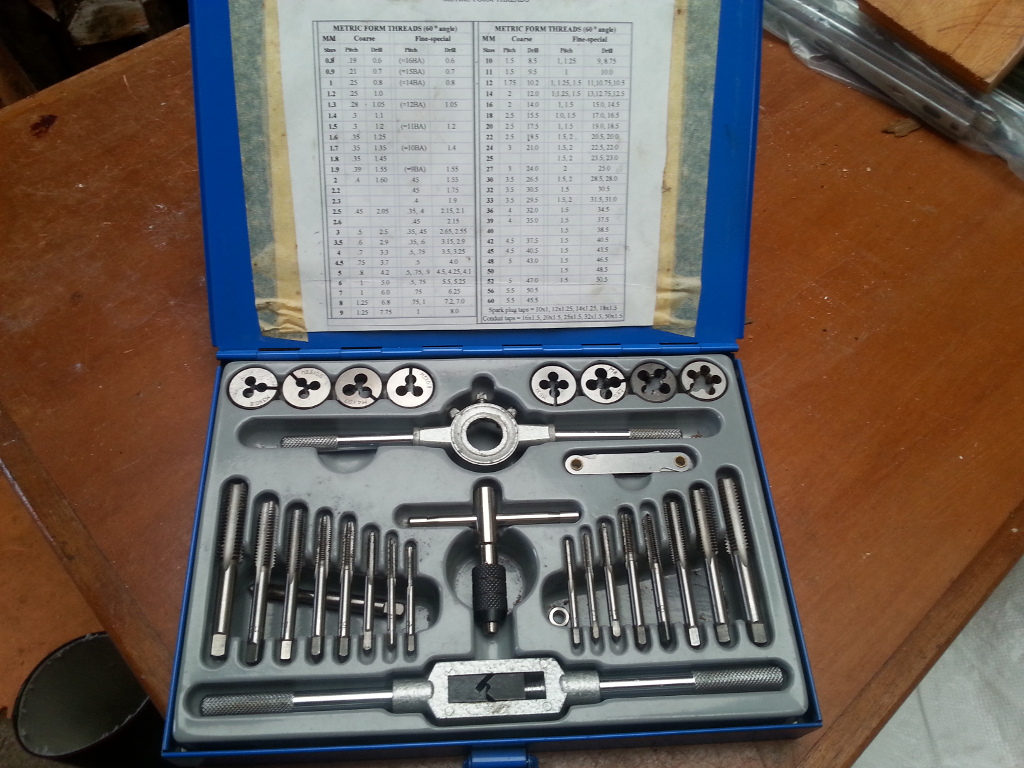Lots of good advice there. Just a couple of points:
1. When getting taps it is really useful to get so-called 'progressive' or 'graduated' sets. The starter tap is not only more tapered at the start but is a thinner diameter, and they progress as you get to the final size. Sometimes hard to determine from an advert. The set below is graduated and was cheap on eBay though there is no indication on the box!
2. Brass is very easy to tap or thread, aluminium is harder (lubricate with WD40) steel and cast iron are not too bad (use cutting fluid), stainless steel is terrible (cutting fluid and good quality sets). For a nice looking and smooth plane adjuster I suggest getting a bronze rod (bit stronger than brass, but that would be second best.
3. When tapping, get used to taking a half-turn cut, then backing off the tap till you feel the back of the flutes on the tap cutting off the scarf (hard to describe, easy to feel). Otherwise it will clog up and jam, and ruin the thread.
4. When die cutting (much harder to get a uniform thread rather than a drunkard's walk) make sure you have a good tapered lead-in to the thread. Don't rely on the taper of the die itself. You can always start with a longer piece and cut off the taper afterwards.
5. Where possible use a machine of some sort to keep it all square, especially when starting and especially with a die. A lathe with dedicated tap/die holder is ideal, but drills and even a vice can be used if you have to.
Note that I am Welsh, and a couple can be anything up to 50 ;-).
Keith



